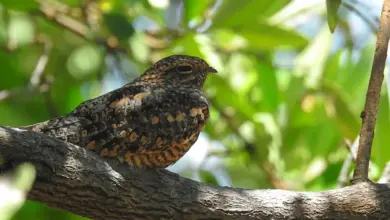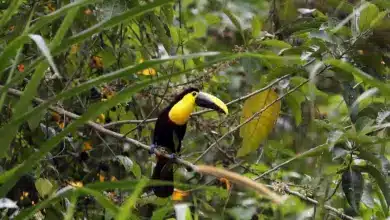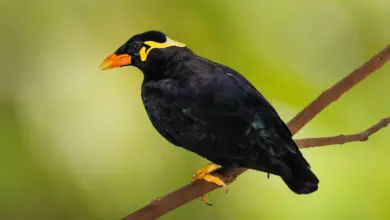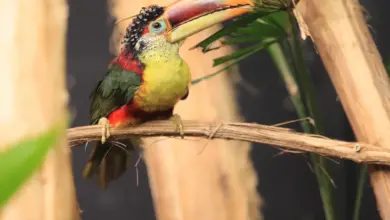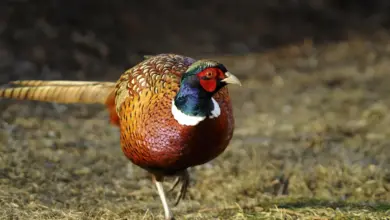A passerines is a bird of the order Passeriformes, which includes more than half of all bird species. Sometimes known as perching birds or, less accurately, as songbirds, the passerines form one of the most diverse terrestrial vertebrate orders: with over 5,000 identified species, it is roughly twice as species rich as the largest of the mammal orders, the Rodentia.
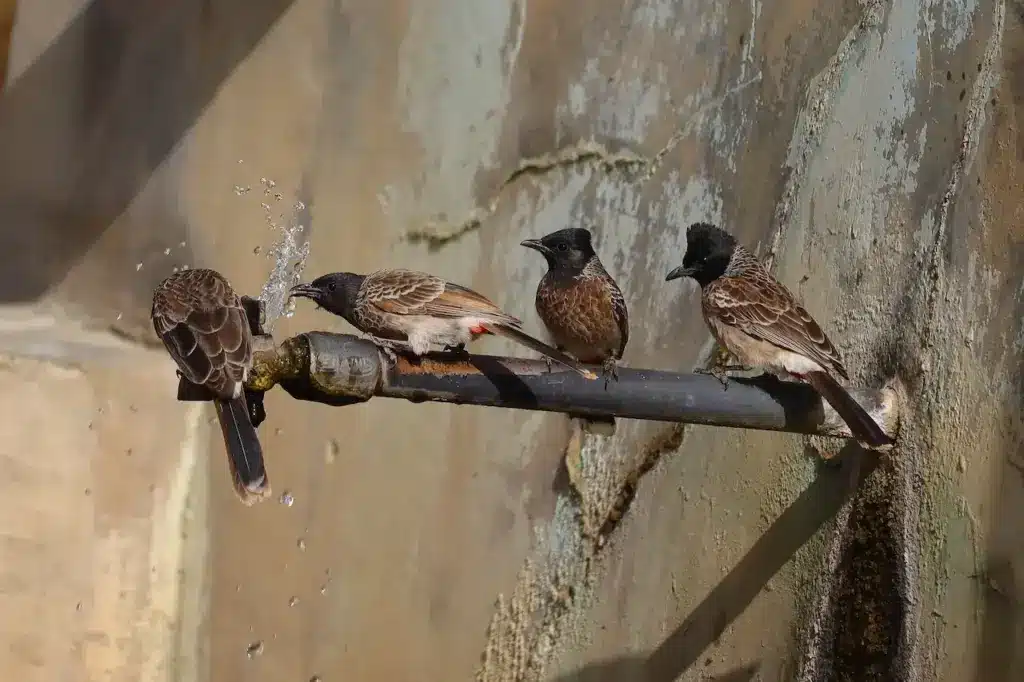
Passerines
Characteristics
The order is divided into three suborders, Tyranni (suboscines), Passeri (oscines), and the basal Acanthisitti. Oscines have the best control of their syrinx muscles among birds, producing a wide range of songs and other vocalizations.
Most passerines are smaller than typical members of other avian orders.
The foot of a passerine has three toes directed forward and one toe directed backwards, called anisodactyl arrangement. This arrangement enables the passerine birds to perch upon vertical surfaces, such as trees and cliffs. The toes have no webbing or joining.
Most passerine birds develop twelve tail feathers. Certain species of passerines have stiff tail feathers, which evolved because these feathers help the birds balance themselves when perching upon vertical surfaces.
The chicks of passerines are altricial; blind, featherless, and helpless when hatched from their eggs. This adaptation requires that the chicks receive a lot of parental care. Most passerines lay colored eggs, in contrast with non-passerines, most of whose eggs are white.
Suborder Tyranni
Suboscines
- Infraorder Eurylaimides – Old World suboscines (or Broad-billed suboscines). Probably a separate suborder.
- Superfamily Eurylaimoidea – broadbills and allies
- Eurylaimidae: broadbills
- Philepittidae: asities
- Sapayoidae: Broad-billed Sapayoa
- Superfamily Pittoidea
- Pittidae: pittas
- Superfamily Eurylaimoidea – broadbills and allies
- Infraorder Tyrannides – New World suboscines
- Superfamily N.N. – “bronchophones”
- Tyrannidae: tyrant flycatchers
- Tityridae: tityras and allies.
- Cotingidae: cotingas
- Pipridae: manakins
- Superfamily Furnarioidea – tracheophones
- Furnariidae: ovenbirds and woodcreepers
- Thamnophilidae: antbirds
- Formicariidae: antpittas, antthrushes and typical tapaculos. Possibly polyphyletic.
- Conopophagidae: gnateaters and gnatpittas
- N.N.: atypical “tapaculos” (crescent-chests and allies)
- Superfamily N.N. – “bronchophones”
Suborder Passeri
Songbirds or oscines
- Basal Passeri – the most ancient true songbirds, endemic to Australia. Sometimes considered a superfamily “Menuroidea”.
- Menuridae: lyrebirds
- Atrichornithidae: scrub-birds
- Superfamily Meliphagoidea – mainly insectivores and nectarivores, distribution centered on Australo-Melanesian region extending into surroundings, notably the Pacific.
- Maluridae: fairywrens, emu-wrens and grasswrens
- Dasyornithidae: bristlebirds. Formerly in Acanthizidae.
- Acanthizidae: scrubwrens, thornbills, and gerygones
- Meliphagidae: honeyeaters
- Meliphagoidea incertae sedis
- Pardalotidae: pardalotes. Formerly in Acanthizidae, might be included in Meliphagidae.
- Acanthorhynchus: spinebills. Usually included in Meliphagidae; might be considered a monotypic family if Pardalotidae are considered valid too.
- Superfamily Corvoidea
- Passeri (mainly “Corvida”) incertae sedis
- Possible superfamily “Ptilonorhynchoidea” – bowerbirds and Australian treecreepers
- Climacteridae: Australian treecreepersTurnagridae: Piopio (extinct)
- Ptilonorhynchidae: bowerbirds
- Possible superfamily N.N. – logrunners and pseudo-babblers
- Orthonychidae: logrunnersPomatostomidae: pseudo-babblers
- Petroicidae: Australian robins
- Possible superfamily N.N.
- Picathartidae: rockfowl.Chaetopidae: rock-jumpers. Recently split from Turdidae.Eupetidae: Malaysian Rail-babbler. Recently split from Cinclosomatidae.
- Possible monotypic superfamily Reguloidea – kinglets
- Regulidae: kinglets
- Possible monotypic superfamily N.N.
- Family N.N.: Hyliotas. Recently split from Sylviidae.
- Irenidae: fairy-bluebirds
- Chloropseidae: leafbirds
- Possible superfamily “Ptilonorhynchoidea” – bowerbirds and Australian treecreepers
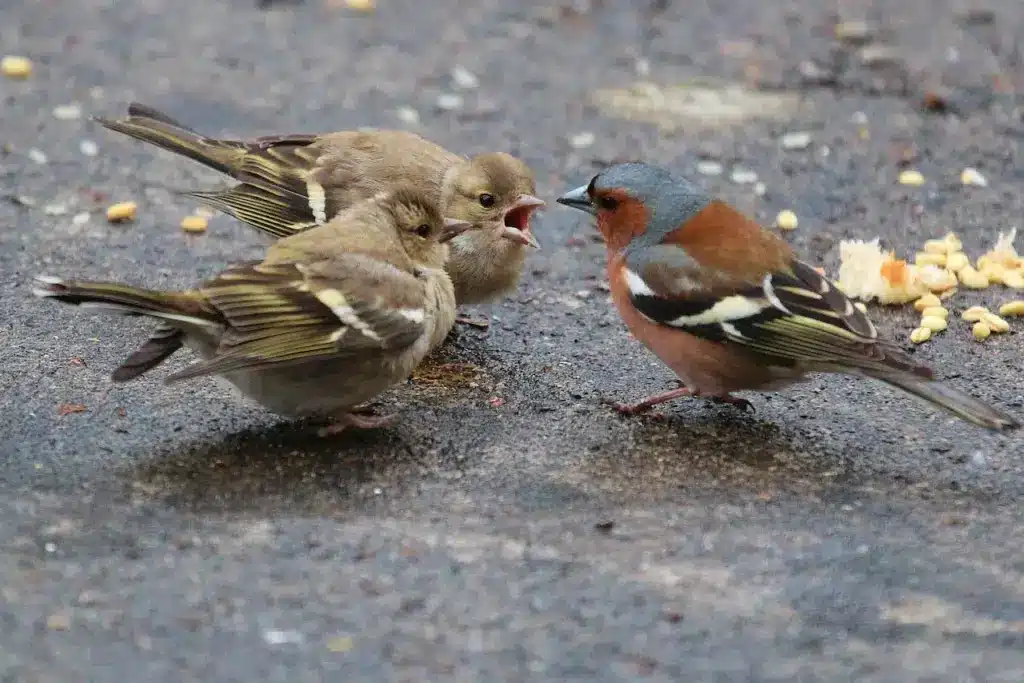
Infraorder Passerida
- Superfamily Sylvioidea – mostly insectivores, distribution centered on the Indo-Pacific region. Few occur in the Australian region and fewer still in the Americas. Usually sleek and drab birds, few have pronounced sexual dimorphism.
- Alaudidae: larks
- Hirundinidae: swallows and martins
- Phylloscopidae: leaf-warblers and allies. Recently split from Sylviidae.
- Aegithalidae: long-tailed tits or bushtits
- Cettiidae: ground-warblers and allies. Recently split from Sylviidae.
- Megaluridae: grass-warblers and allies. Recently split from Sylviidae.
- “Bernieridae”: Malagasy warblers. A newly assembled family.
- Acrocephalidae: marsh- and tree-warblers. Recently split from Sylviidae.
- Pycnonotidae: bulbuls
- Cisticolidae: cisticolas and allies
- Sylviidae: “true/sylviid warblers” and parrotbills. Might be merged in Timaliidae. Monophyly needs confirmation.
- Zosteropidae: white-eyes. Probably belongs in Timaliidae.
- Timaliidae: (Old World) babblers. Monophyly needs confirmation.
- Sylvioidea incertae sedis
- “African warblers”: A proposed clade, but monophyly needs confirmation. Formerly in Sylviidae.
- Donacobius: Black-capped Donacobius. Monotypic family? Tentatively placed here; possibly closest to Megaluridae. Formerly in Troglodytidae and Mimidae.
- Nicator: Relationships unresolved, monotypic family? Tentatively placed here; formerly in Pycnonotidae.
- Superfamily Muscicapoidea – mostly insectivores, near-global distribution centered on Old World tropics. One family endemic to Americas. Nearly absent (except introductions) from the Australian region. Usually rather stocky for their size, most are quite dark and dull though Sturnidae are commonly iridescent and/or colorful. Sexual dimorphism often absent, sometimes pronounced.
- Cinclidae: dippers
- Muscicapidae: Old World flycatchers and chats. Monophyly needs confirmation.
- Turdidae: thrushes and allies. Monophyly needs confirmation.
- Buphagidae: oxpeckers. Formerly usually included in Sturnidae.
- Sturnidae: starlings
- Superfamily Certhioidea – wrens and allies. Sometimes included in Muscicapoidea.
- Sittidae: nuthatches
- Tichodromadidae: Wallcreeper: Traditionally placed as a subfamily of the nuthatches and more rarely of the treecreepers, no study has been able to verify either placement this far. Thus it is better considered a monotypic family, at least for the time being.
- Certhiidae: treecreepers
- Salpornithidae: Spotted Creeper. Tentatively placed here; often considered a subfamily of the Certhidae.
- Troglodytidae: wrens
- Polioptilidae: gnatcatchers
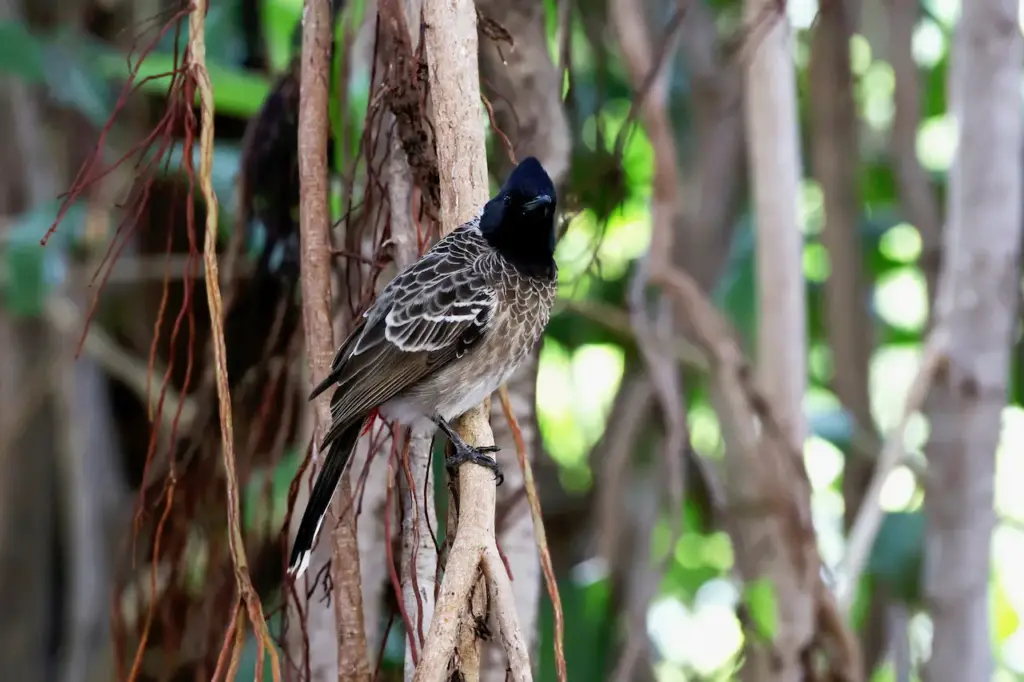
- Superfamily Passeroidea – mostly herbivores including many seed-eaters, near-global distribution centered on Palearctic and Americas. Includes the Nine-primaried oscines (probably a subclade). A very high proportion of colorful and highly sexually dimorphic forms.
- Passeridae: true sparrows
- Prunellidae: accentors
- Motacillidae: wagtails and pipits
- Urocynchramidae: Przewalski’s Finch. Recently split from Fringillidae; tentatively placed here.
- Estrildidae: estrildid finches (waxbills, munias, etc.)
- Ploceidae: weavers
- Viduidae: indigobirds and whydahs
- Nine-primaried oscines:
- Peucedramidae: Olive Warbler]
- Fringillidae: true finches and Hawaiian honeycreepers. Possibly polyphyletic.
- Icteridae: grackles, New World blackbirds, and New World orioles
- Parulidae: New World warblersThraupidae: tanagers and allies
- Cardinalidae: cardinals
- Emberizidae: buntings and American sparrows
- Passeroidea incertae sedis
- Coerebidae: Bananaquit. Family invalid or not monotypic; reallocation pending.
- Passerida incertae sedis – Rather basal Passerida, most of which seem to constitute several small but distinct lineages that could be considered superfamilies. Most occur in Asia, Africa and North America.
- Panurus: Bearded Reedling (Bearded “Tit”). Relationships enigmatic. Formerly in “Paradoxornithidae”, might be included in Sylvioidea as monotypic family Panuridae or even constitute the smallest passerine superfamily.
- Possible superfamily Paroidea – titmice and allies. Might be included in Sylvioidea.
- Paridae: tits, chickadees and titmice
- Remizidae: penduline tits. Sometimes included in Paridae.Stenostiridae: stenostirids (“flycatcher-tits”). A newly assembled family; sometimes included in Paridae.Possible superfamily Bombycilloidea – waxwings and allies. Included in Muscicapoidea if Sittoidea/Certhioidea are not considered a distinct superfamily.
- Bombycillidae: waxwings
- Dulidae: Palmchat. Tentatively placed here.
- Ptilogonatidae: silky flycatchers. Tentatively placed here.
- Hypocoliidae: Hypocolius. Tentatively placed here.Mohoidae
Possible superfamily “Dicaeoidea” – sunbirds and flowerpeckers. Might be included in Passeroidea.
- Nectariniidae: sunbirds
- Dicaeidae: flowerpeckers
Possible monotypic superfamily N.N.
- Promeropidae: sugarbirds. Might be included in Passeroidea.
Please Note: The articles or images on this page are the sole property of the authors or photographers. Please contact them directly with respect to any copyright or licensing questions. Thank you.
